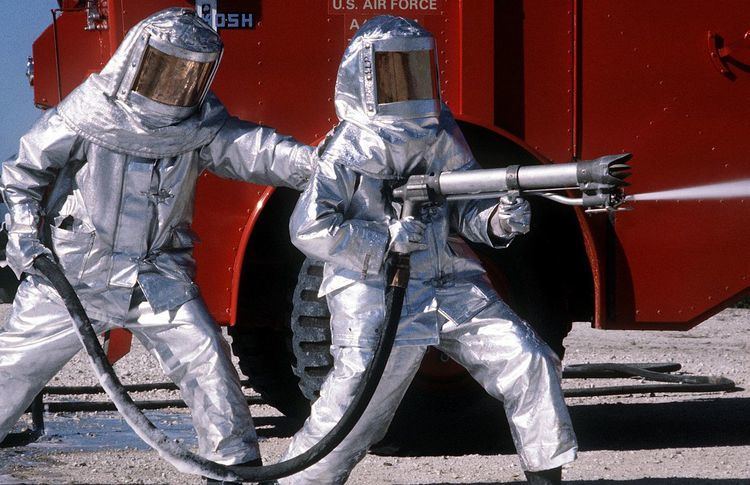A fire proximity suit (also, silvers, silver bunker suit, or asbestos suit) is a suit designed to protect a firefighter from high temperatures, especially near fires of extreme temperature such as aircraft fires. They were first designed and used in the 1930s. Originally made of asbestos fabric, current models use vacuum-deposited aluminized materials.
Fire proximity suits first appeared during the 1930s, and were originally made of asbestos fabric. Today they are manufactured from vacuum-deposited aluminized materials that reflect the high radiant loads produced by the fire.
There are three basic types of these aluminized suits:
Approach suit—used for work in the general area of high temperatures such as steel mills and smelting facilities.Ambient heat protection up to ≈200 °F (93 °C).Proximity suit—used for aircraft rescue and fire fighting (AR-FF) and, in more heavily insulated versions, for kiln work requiring entry into the heated kiln.Kiln suit ambient protection ≈2,000 °F (1,093 °C)Proximity ambient protection ≈500 °F (260 °C)Entry suit—used for entry into extreme heat and situations requiring protection from total flame engulfment. Most commonly made of Zetex or Vermiculite and not aluminized.Entry suit ambient protection ≈2,000 °F (1,093 °C)) for short durationProlonged radiant heat up to 1,500 °F (816 °C).Complete proximity protection for AR-FF requires:
Aluminized hood or helmet cover with neck shroudAluminized jacket and pants complete with vapor barrier insulated linerAluminized lined glovesAluminized AR-FF bootsSelf-contained breathing apparatus (SCBA) (aluminized covers for air bottles, or suits that cover the air pack are also available)
